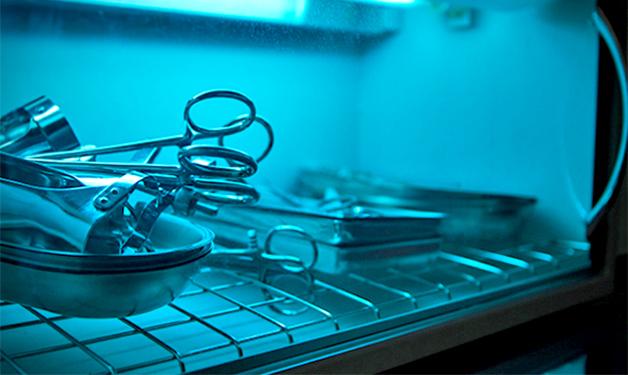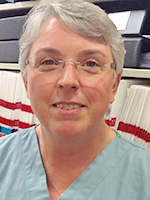
Planning how to properly clean medical equipment used in research can make all the difference for project approval.
Janet Bristeir, coordinator for the Reprocessing Practices Improvement Program (RPIP) at Vancouver Coastal Health (VCH), shares tips for researchers about how to avoid delays, pitfalls, and errors when incorporating medical equipment that requires reprocessing (i.e. sterilization) into research.

Tip 1: Plan ahead, secure approvals
I suggest that researchers start thinking about the reprocessing of their devices during the research and development phase of their study. A lot of the devices we get these days are very complex, but researchers need to ask themselves: “Can the device and all its parts be cleaned, disinfected, and sterilized appropriately? How will we achieve that?”
If a researcher will be using a new or modified medical device in their research project, they should seek RRVC approval early on when applying for their approvals through the appropriate University of British Columbia ethics department(s) and VCH Research Institute generally. This RRVC process engages review and advice from infection control and medical device reprocessing to ensure that the device can be effectively cleaned and sterilized for use with patients.
Tip 2: Consider the details
Remember that if the device is comprised of several different materials, the sterilization and reprocessing method for each of those materials must be considered; for example, if a device has both metal and polymer components, the polymer may not be able to go through steam sterilization and the metal may not be able to go through the chemical sterilization process.
Researchers should know the device’s classification per the Health Canada regulations in order to understand the regulatory specifics that may apply to it. There are four classes of devices: class 1 is the lowest risk class, with non-invasive contact with the patient. Class I non-invitro devices include, among other types, those that make only non-invasive contact with the patient and do not transmit energy to the patient. Classes II, III and IV include devices of increasingly higher risk as determined by such factors as their degree of invasiveness, the hazards of energy transmission, and the potential consequences to the patient in case of device malfunction or failure.
Other considerations to keep in mind include:
- Can the medical device fit into the sterilizer?
- Where is the sterilizer located relative to your research site?
- What is the turn-round time for sterilization? Depending on the type of sterilization you may have to wait to four hours to five days (if device sent off site) to reprocess your equipment.
- What is the cost of the cleaning, disinfection and sterilization process? If the device has lumen, will the diameter and length impede the cleaning, disinfection and sterilization process?
- How will the device be packaged, labeled, stored and transported?
Tip 3: Get the required independent lab validation
As the researcher creating a new device or modifying an existing market device, you’re the manufacturer of the device. When you submit your instructions on how to reprocess the device for approval, VCH RRVC needs to know that an independent lab has validated that process to be effective in ensuring the sterility of the device. Getting lab validation of sterilization instructions can be costly; be sure to incorporate this as an item in your research budget.
Even if you’re working with a device already on the market but adapting that device, you will need to understand and explain how that adaption affects that device; validated reprocessing instructions are needed for modified market devices as well as devices not yet on the market.
Tip 4: Get a picture
It always helps to have a picture or diagram of the medical device being created (or adapted) so that we can better understand what you’re trying to achieve and the interaction of the components and with the patient. So, send us a picture along with the explanation of how the device is going to be used and the proposed cleaning and reprocessing instructions.
Tip 5: When in doubt, ask!
I encourage researchers and research coordinators to email or call me to me while they are preparing their application to UBC Ethics and VCHRI. I can help with navigating the process to confirm reprocessing practices and approvals, including providing and explaining the necessary forms. We’re here to support safety and innovation, and I look forward to assisting researchers in their endeavours.


